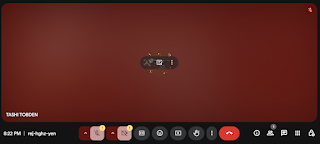In today’s diverse classrooms, assistive technologies play a pivotal role in ensuring that all learners, regardless of their physical or cognitive abilities, have equal access to education. These tools not only promote inclusivity but also empower students with disabilities to learn more independently and meaningfully. In this reflection, I explore two widely used assistive technologies: screen readers and speech-to-text software, discussing their effectiveness, relevance, and contribution to inclusive education.
1.Screen Readers: Improving Learning for People with Visual Disabilities
Screen readers are used to translate digital text into either spoken or Braille text. JAWS (Job Access With Speech) is well known among the world’s top screen readers. Visually impaired students rely on screen readers to explore computer environments, go through electronic study materials and participate in school management platforms.
Educators use screen readers because they support Universal Design for Learning (UDL) which recommends using numerous methods to present information (CAST, 2018). Because they provide written text in a format students can listen to, screen readers help more students participate in classroom activities. Students may read set materials, join in with online discussions and complete quizzes all by themselves, without needing anyone else.
Although screen readers are very helpful, the quality of their results is affected by the accessibility of what is being read. Teachers are responsible for confirming that all teaching materials—PDFs, PowerPoint slides and websites—are accessible (for example, by organizing headings, using alternative text for images and making the writing easy to read). When content isn’t accessible, screen readers can only do so much.
Using screen readers in inclusive classrooms encourages fellow students to feel empathy and notice differences. They can add activities to educate students who can see about what it’s like to have vision impairments. Because of this, assistive technologies make learning inclusive and help both the learner and other students feel connected.
2. Speech-to-Text Software: Empowering Learners with Writing Difficulties
Speech-to-text software, also called voice recognition software, turns the things we say into written form. When teaching students with these issues, teachers turn to Dragon NaturallySpeaking and Google Docs Voice Typing.
This technology has a strong impact on students who have difficulties controlling their movements or developing their spellings. Since speaking into a microphone is an option, learners can create their written work, respond to questions or take notes with greater ease. As a result, they spend their energy on what their answers say, rather than on how their responses are constructed.
Looking at speech-to-text tools critically, they can raise students’ confidence and determination. Behrmann (1995) explains that assistive technology gives students the independence and belief in themselves they need for academic achievement. If students get tools that match their requirements, they become more interested in learning and participate more while lessons are happening.
Yet, as with all tools, there are some limits to speech-to-text software. Transcription is not always accurate because of sounds in the background, how clearly people are talking and their accents. Still, some students will require guidance and practice in how to use the software. If a certain technology fails, teachers should give students other choices.
Spite these difficulties, it is clear that using these tools in inclusive classrooms is appropriate. It serves students with different requirements and encourages equality among them. Besides, it helps those who are studying a second language by letting them express their views more clearly.
How suitable are the technologies being used?
Both screen readers and speech-to-text devices prove themselves to be very suitable for use in inclusive classrooms. They deal with particular learning problems and encourage learners to be involved and independent. Success in using these tools depends also on educators being sensitive to their students and prepared to use them.
Teachers have to be aware of the available technology, Internet and devices to make best use of online teaching tools. Teachers operating in places with limited resources have to look for open-source software or affordable programs.
At the same time, the introduction of assistive technology should be matched with regular assessment. Teachers are responsible for watching whether the chosen technology truly helps the students learn appropriately or if changes are required. What students say about the tools is important for making them better.
Conclusion
Assistive technologies are necessary for creating classrooms that treat all students equally by providing options for learning. Assistive technology such as screen readers and software that turns speech to text demonstrates how it can support people’s learning. Yet, whether these tools work well or not is influenced by how thoughtfully teachers use them, how easy the material is to find and how knowledgeable and willing teachers are. Going forward, we must think of assistive technologies as necessary parts of inclusive teaching instead of as tools we use only when needed. Our job is only done once every student can take part in the learning process.
References
Behrmann, M. (1995). Assistive technology for students with mild disabilities. ERIC Digest.
CAST. (2018). Universal Design for Learning Guidelines version 2.2. Retrieved from https://udlguidelines.cast.org





.webp)
